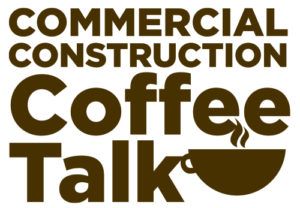As the global focus on sustainability intensifies, the construction industry is significantly transforming. In 2025, the need for green, energy-efficient buildings has become more pressing than ever. With climate change concerns, resource shortages, and a growing demand for eco-friendly solutions, the role of sustainable construction practices is becoming increasingly critical.
Builders and developers are now tasked with meeting the evolving demands of a market that values innovation and seeks responsible construction methods. Builders must embrace cutting-edge technologies, sustainable materials, and forward-thinking practices to stay ahead. One way to ensure a project is executed effectively is by partnering with a skilled renovation company that understands sustainable design and construction intricacies.
The Rise of Green Building Materials
Green building materials have become essential for the construction industry operations in 2025. Builders who want to lead their field now select building materials that reduce environmental damage while
providing long-term advantages and excellent energy efficiency. The construction industry employs new and transformational projects through materials such as recycled steel, bamboo, reclaimed wood, and eco-friendly insulation.
Building codes and government incentives drive market demand, as both factors emphasize sustainable construction practices. To enhance their projects’ sustainability, builders should focus on obtaining building materials with renewable origins and small carbon emissions. The environmental benefits of this transition lead to substantial long-term savings because of building energy efficiency.
Green materials now incorporate an increasing number of recyclable and biodegradable construction products. The choice of materials that builders can repurpose at building expiration points reduces waste while reducing the total environmental impact. The selection of future-reusable materials enables builders to establish a circular building method that delivers permanent benefits to environmental protection and business financial outcomes. The competitive market demands builders to stay informed about emerging sustainable materials and their advantages to stay competitive.
Technology’s Role in Sustainable Construction
The advancement of technology enables designers and constructors to implement various sustainable solutions that transform building frameworks. Innovative building technologies will control the market throughout 2025. New technologies provide buildings with advanced energy-efficient systems alongside integrated automation and design algorithms, leading to improved building performance and decreased energy use.
Before construction starts, software tools enable builders to generate energy models, which forecast their buildings’ performance regarding energy consumption and water conservation, together with waste management capabilities. These technologies allow builders to optimize construction operations, reduce wasteful practices, and deliver higher operational efficiency.
3D printing is a revolutionary construction tool that is fast emerging in the industry. Plastic features incorporating sustainable building materials enable builders to build intricate installations, leading to reduced site debris during construction. This technology achieves exacting construction together with decreased errors, resulting in reduced material costs and energy consumption. The continuous development of 3D printing technology enables builders to design and create specific building elements that precisely match design parameters to minimize waste while speeding up project scheduling. These modern construction technologies increase efficiency and fulfill the industry requirement for more sustainable operations.
Embracing Renewable Energy Solutions
Sustainable construction requires adding renewable energy solutions to the integration process. Retrofits and new buildings implement solar panels, wind turbines, and geothermal systems at rising frequencies. Builders receive instructions to create structures that transform renewable energy into power resources, thus decreasing dependence on conventional energy networks and reducing building ownership expenses.
Solar power is the leading sustainable construction solution because it offers both affordability and widespread adoption. Building designers can stay competitive by selecting solar technology, which becomes more straightforward to integrate into architectural plans because its costs continue to decrease.
The Future of Sustainable Construction
Sustainable construction during 2025 and future years will evolve through continuous innovative approaches and adjustable methods. Competitive builders must maintain their knowledge about current regulations and new materials and technologies to succeed in the market. The industry needs to develop additional efficient construction practices because net-zero building requirements are increasing. Sustainable building design will grow by combining green roofs, urban farming systems, and energy-efficient windows.
In 2025, sustainable construction practices need to exceed basic compliance standards because they demand companies embrace environmentally conscious and enduring development approaches. Building practices that integrate green materials, renewable energy solutions, and advanced technologies enable construction experts to triumph in the market and create a cleaner, sustainable world.





























